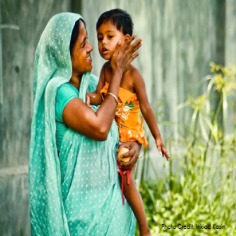Interactive Storytelling: USAID’s Stories Platform

Delving into the stories behind the data and sharing them the right way is what can reinforce objectives, motivate staff and inspire others. This is exactly what USAID does with their new Stories platform. Stories integrates great design, photography and video, sharing stories told by the very people the data is about.
The site truly stands out—it’s a powerhouse using parallax design and a thoughtful structure to enable the visitor to explore diverse topics, locations and projects. Minimal copy accompanies narrative photography that reinforces the text. The viewer can scroll down to reveal the next “page” in the sequence, as if “flipping” through a storybook, as the story progresses.
Varied photo arrangements, from large to small, keep it interesting while videos provide opportunity to delve deeper. An interactive graphics map, found under the menu, allows users to explore the extent of USAID’s global initiatives.
Showcasing different people through personal accounts in line with USAID’s priorities – from educating girls to using technological innovations to bring electricity to a village – makes for exciting content that’s non-repetitive.
While the Stories hub backs up global projects and spotlights real people involved, these anecdotes also work together towards a unifying theme of “Extreme Possibilities”, the bigger picture USAID wishes to share, and a theme impossible to express alone with metrics and statistics.
What it Takes
USAID’s Stories took a significant amount of resources to create. Much forethought and planning is required to capture these stories. But it is possible for smaller agencies and budgets to create similar content. Think about what content you need, what themes are appearing in your work, and how to capture them visually over a period of time in different places. Capitalize on meetings, field visits and set aside a little time for documentation.
Drill down into specifics—how many people need to be interviewed? What visuals provide real context for their stories? If the story is about women farmers for example, get images of them at work and at home; try to capture who they are and what day-to-day life looks like.
Begin with your reports, but look past them to the people affected to use creative storytelling to your advantage.
Check these out!
USAID’s Stories hub
https://stories.usaid.gov/
DevEX article by Kelly Ramundo
https://www.devex.com/news/stories-to-inspire-the-end-of-extreme-poverty-86667
